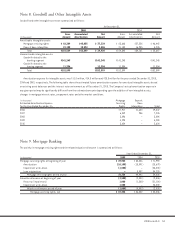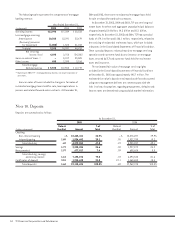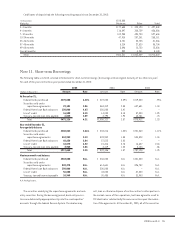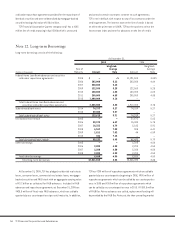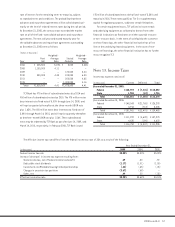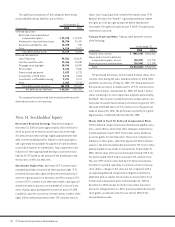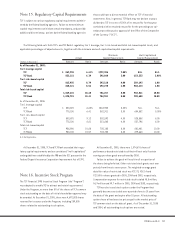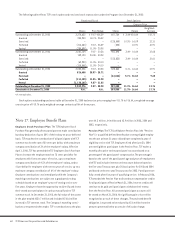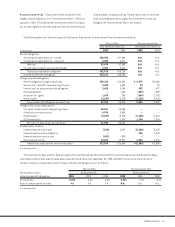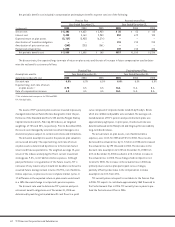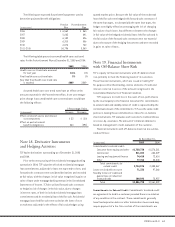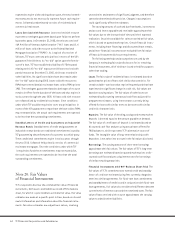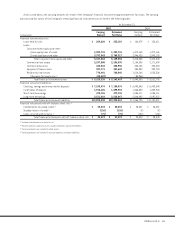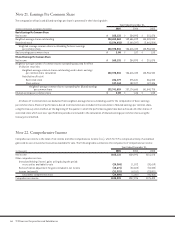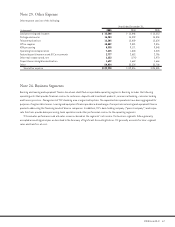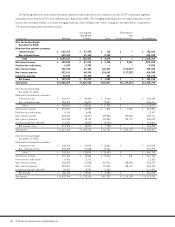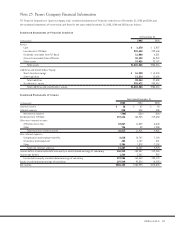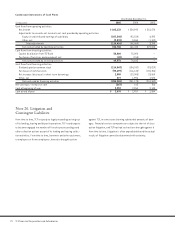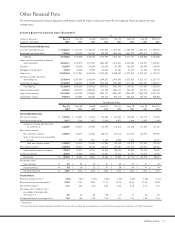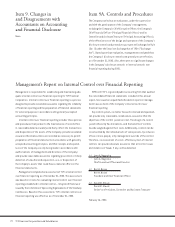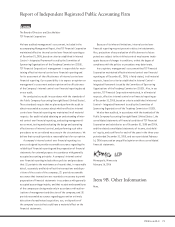TCF Bank 2005 Annual Report Download - page 83
Download and view the complete annual report
Please find page 83 of the 2005 TCF Bank annual report below. You can navigate through the pages in the report by either clicking on the pages listed below, or by using the keyword search tool below to find specific information within the annual report.
632005 Form 10-K
The following are expected future benefit payments used to
determine projected benefit obligations:
Pension Postretirement
(In thousands) Plan Plan
2006 $ 6,562 $ 863
2007 5,863 841
2008 6,182 826
2009 6,310 806
2010 6,576 762
2011-2015 36,796 3,360
The following table presents assumed health care cost trend
rates for the Postretirement Plan at December 31, 2005 and 2004:
2005 2004
Health care cost trend rate assumed
for next year 8.6% 10%
Final health care cost trend rate 5% 5%
Year that final health care trend rate
is reached 2009 2009
Assumed health care cost trend rates have an effect on the
amounts reported for the Postretirement Plan. A one-percentage-
point change in assumed health care cost trend rates would have
the following effects:
1-Percentage-Point
(In thousands) Increase Decrease
Effect on total of service and interest
cost components $ 33 $ (20)
Effect on postretirement
benefits obligations 364 (298)
Note 18. Derivative Instruments
and Hedging Activities
TCF had no derivatives outstanding as of December 31, 2005
and 2004.
Prior to the restructuring of the residential mortgage banking
operation in 2004, TCF’s pipeline of locked residential mortgage
loan commitments, adjusted for loans not expected to close, and
forward sales contracts were considered derivatives and recorded
at fair value, with the changes in fair value recognized in gains on
sales of loans under mortgage banking revenue in the Consolidated
Statements of Income. TCF also utilized forward sales contracts
to hedge its risk of changes in the fair value, due to changes
in interest rates, of both its locked residential mortgage loan
commitments and its residential loans held for sale. Residential
mortgage loans held for sale were carried at the lower of cost
or market as adjusted for the effects of fair value hedges using
quoted market prices. Because the fair value of the residential
loans held for sale were hedged with forward sales contracts of
the same loan types, or substantially the same loan types, the
hedges were highly effective at managing the risk of changing
fair values of such loans. Any differences between the changes
in fair value of the hedged residential loans held for sale and in
the fair value of the forward sales contracts were not material
due to the nature of the hedging instruments and were recorded
in gains on sales of loans.
Note 19. Financial Instruments
with Off-Balance Sheet Risk
TCF is a party to financial instruments with off-balance sheet
risk, primarily to meet the financing needs of its customers.
These financial instruments, which are issued or held by TCF
for purposes other than trading, involve elements of credit and
interest-rate risk in excess of the amount recognized in the
Consolidated Statements of Financial Condition.
TCF’s exposure to credit loss in the event of non-performance
by the counterparty to the financial instrument for commitments
to extend credit and standby letters of credit is represented by the
contractual amount of the commitments. TCF uses the same credit
policies in making these commitments as it does for on-balance
sheet instruments. TCF evaluates each customer’s creditworthiness
on a case-by-case basis. The amount of collateral obtained is
based on management’s credit evaluation of the customer.
Financial instruments with off-balance sheet risk are summa-
rized as follows:
At December 31,
(In thousands) 2005 2004
Commitments to extend credit:
Consumer home equity and other $1,750,738 $1,576,381
Commercial 811,652 684,029
Leasing and equipment finance 74,418 72,614
Other 77,766 55,343
Total commitments to
extend credit 2,714,574 2,388,367
Loans serviced with recourse 71,332 97,568
Standby letters of credit and
guarantees on industrial
revenue bonds 100,892 75,957
Total $2,886,798 $2,561,892
Commitments to Extend Credit Commitments to extend credit
are agreements to lend to a customer provided there is no violation
of any condition in the contract. These commitments generally
have fixed expiration dates or other termination clauses and may
require payment of a fee. Since certain of the commitments are


